Totemic Artefacts: Playmates Star Trek: Deep Space Nine Wave 2 (Part 2)
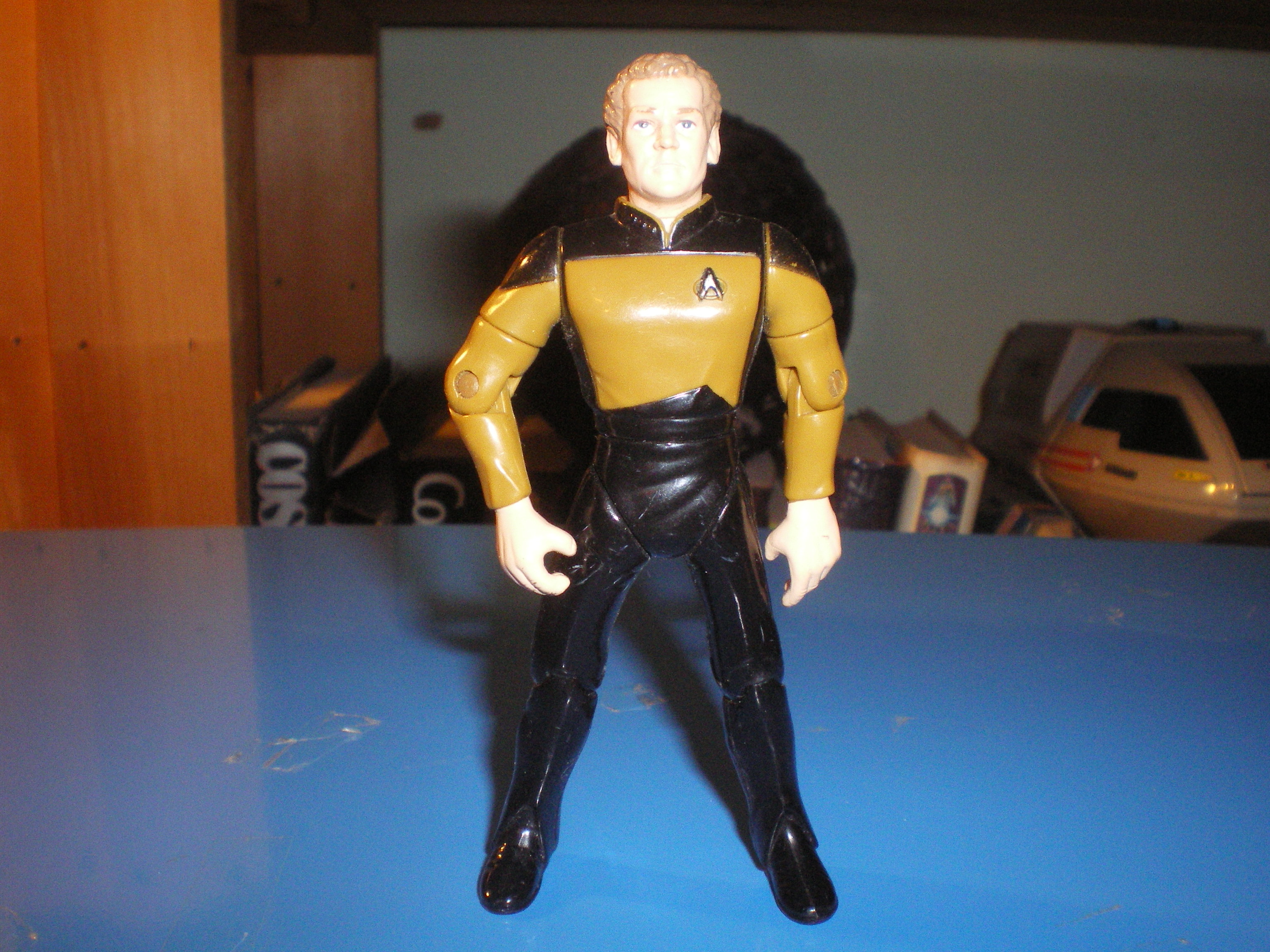

 Hi all. Busy working on edits for The Last War in Albion, Volume 1, which we’re planning to get out in August. Also, the next installment of Lost Exegesis (Solitary) is taking quite a bit of research, but this is par for the course, as we’ll be venturing into the Quran, several philosophers, and a long-defunct TV show. In the meantime, here’s the poem I read last Christmas for the Eruditorum Christmas Spectacular Podcast, but never got posted. So here it is. It’s about a man coming out of a ten-day medically induced coma after contracting spinal and cerebral meningitis, complicated by pneumonia, sepsis, and a mild heart attack. It’s a poem about my dad.
Hi all. Busy working on edits for The Last War in Albion, Volume 1, which we’re planning to get out in August. Also, the next installment of Lost Exegesis (Solitary) is taking quite a bit of research, but this is par for the course, as we’ll be venturing into the Quran, several philosophers, and a long-defunct TV show. In the meantime, here’s the poem I read last Christmas for the Eruditorum Christmas Spectacular Podcast, but never got posted. So here it is. It’s about a man coming out of a ten-day medically induced coma after contracting spinal and cerebral meningitis, complicated by pneumonia, sepsis, and a mild heart attack. It’s a poem about my dad.
…
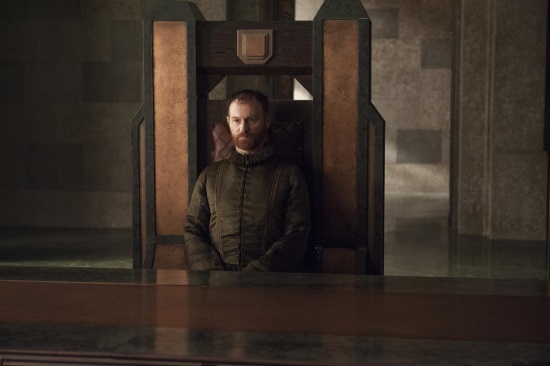 |
| Ugh. It’s the Gatiss episode. |
State of Play
The choir goes off. The board is laid out thusly:
Lions of Kings Landing: Tyrion Lannister, Jaime Lannister, Cersei Lannister, Tywin Lannister
Dragons of Mereen: Daenerys Targaryen
Roses of Kings Landing: Margaery Tyrell
Ships of Braavos: Davos Seaworthy
Burning Hearts of Braavos: Stannis Baratheon
Kraken of the Dreadfort: Theon Greyjoy
Flayed Men of the Dreadfort: Ramsay Snow
Spiders of King’s Landing: Varys
Flowers of King’s Landing: Shae
With the Bear of Mereen, Jorah Mormont
Winterfell is abandoned and in ruins, the Wall is unmanned.
The episode is in four parts. The first runs eight minutes and is set in Bravos. The opening shot is of Stannis’s ship sailing across the Narrow Sea.
The second runs eight minutes and is set at the Dreadfort. The transition is by the concept of ships, from Davos hiring Sallador Sahn to Asha sailing towards the Dreadfort.
The third runs six minutes and is set in Mereen. The transition is by hard cut, from Ramsey’s smiling face to a goat herder.
The fourth runs twenty-five minutes and is set in King’s Landing. The transition is by dialogue, with Daenerys coming up in conversation at the council meeting. The final shot is Tyrion smiling at having landed on a ladder and demanded trial by combat.
Analysis
Like “The Lion and the Rose,” there are several courses of vegetables followed by dessert. The vegetables are much the same – two lengthy sections dealing with Stannis and the Dreadfort. Indeed, so is the dessert – a big King’s Landing set piece, although not quite so big as “The Lion and The Rose” due to significant attrition in the number of available characters. But this is in every regard the more intensive version of the exercise. “The Lion and the Rose” built inexorably to its denouement, inserting two earlier King’s Landing scenes to build to the wedding. “The Laws of Gods and Men,” on the other hand, drops its two slogs consecutively at the start, then offers a palate cleanser in Meereen before plowing into its King’s Landing piece as one single bloc.
This is, of course, slightly unfair to both the Stannis and Ramsay scenes, as they do have several legitimate points of interest. Stannis’s scene, for instance, is the occasion for introducing a new location to the opening credits, which gives it an odd emphasis, even if the weight of Braavos as a location is not entirely clear. (Although it’s notable that Tywin and Arya both talked about it last episode, further emphasizing it as a big deal.) But this is mostly an intellectual curiosity – Stannis is on his way back out of Braavos after eight minutes, and while the location sticks around in the credits for the rest of the season (whereas the Eyrie, curiously, never gets used), nothing of its importance is actually conveyed by the episode, its introduction serving the same purpose as Liam Cunningham’s charisma, namely desperately trying to spice up a dull scene.
The Dreadfort scene is more straightforward in its efforts to make itself engaging, in that it has people hitting each other with swords.…
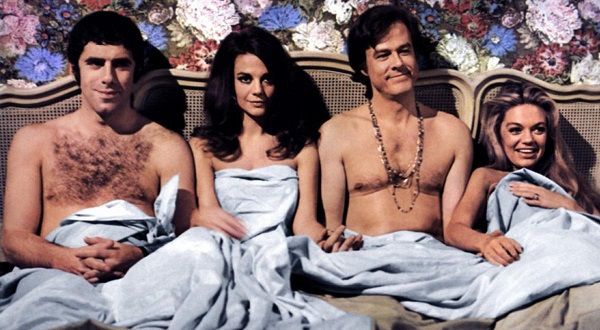 (Title given to this post with apologies to Jane and Lee, who to my knowledge are not in a relationship as would be implied by the inherent parallelism.)
(Title given to this post with apologies to Jane and Lee, who to my knowledge are not in a relationship as would be implied by the inherent parallelism.)
This week over on Oi! Spaceman, Shana and I were joined by the wonderful Jane Campbell and chatted about The Time Monster in an episode called “Esoterica, Power, and Dick Jokes,” and in which all three of that triptych make an appearance. Jane has already shared that with the Eruditorum Press audience in the link above (and had a brief digression about hooting owls in the process), so I’m assuming most of you have already seen it, but if not you the link above will send you right there.
Title and header image are actually from this week’s They Must Be Destroyed on Sight, in which Lee and I kick off this year’s sex comedy series with a look at the 1969 counterculture/open relationship classic Bob & Carol & Ted & Alice. (Link goes to the podcast episode page.) Lee is monogamous (while, if you hadn’t heard already, I am polyamorous), so there was an interesting back and forth on the different character interactions and the overall meaning of the film as a whole. Some of the material I cover in this podcast is liable to make it into a future essay, so if you want an advance look at some of my thoughts on the way the sixties counterculture fed into the cultural malaise of the seventies, go give it a listen.…
First of all, I just want to direct you all to Shana’s post from Friday, because it’s an absolute stunner. Really, everybody’s on form lately, and it’s leaving me itching to finish off Brief Treatise, because I feel like the weak link on my own site. Although the truth is that something fairly fast and easy like Brief Treatise is still useful while I finish up Last War in Albion Volume 1 revisions (which I got the last big part of done this week), typeset Neoreaction a Basilisk, and finally get some work done on the next actual chapter of Last War in Albion. So I’m busy, just not with stuff that goes on the blog weekly.
Still, I’ve been thinking about what I want to do after Brief Treatise and the Super Nintendo Project wrap. I’ve got a Jack-style series in mind called Build High for Happiness, and an ongoing thing called The Proverbs of Hell, both of which should be fun. And perhaps one-offs on things like Mr. Robot season two, which I’m terribly excited for. And probably reviews of The Obelisk Gate and Death’s End when those come out. Those will presumably come before Super Nintendo Project wraps, of course.
Meanwhile, for discussion this week… what do you want that science fiction isn’t providing for you right now? …
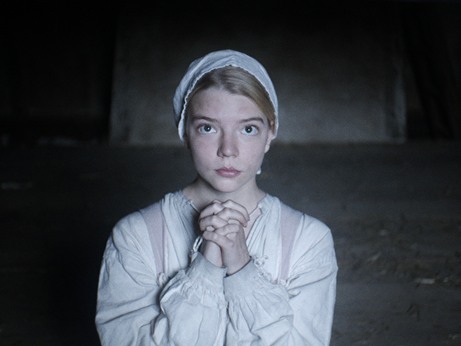 This post is based on a true story.
This post is based on a true story.
(SPOILERS for various films)
The Conjuring movies are about good and bad women. In the first movie the central antagonist is the spirit of a dead witch who killed her own baby and then herself, and whose spirit subsequently possesses every women who movies into her house, or onto her former grounds, and makes them kill their own children. The ultimate evil then, for a woman, is to pervert the virtue of motherhood. In the story, a mother of five daughters finds herself in the home of this dead witch, gradually possessed by her. Her ultimate salvation, the thing that enables her to defeat the witch who is possessing her and trying to make her kill her daughters, is a memory of a perfect family day at the beach. Yes, that’s right – in the end, all it takes is for Elaine Warren (psychic investigator) to touch the woman’s head and enjoin her to remember family values. Ed Warren’s attempt at an exorcism fails, but Elaine is able to connect with the possessed woman directly, via their mutual motherhood. This connection allows the possessed woman to defeat the evil infanticidal witch using just the strong loving strength of her strong maternal love. Elaine is, needless to say, a near-perfect mother herself, and when the witch ghost tries to attack her, it does so by threatening her own daughter. It threatens the daughter using (or possibly in alliance with) Annabelle the evil porcelain doll – an emblem of childhood in that it is both a toy and a figure of a girl.
In the second Conjuring movie (just out), Ed and Elaine are called in to evaluate the case of a young girl who is supposedly being possessed by the spirit of an old man who once lived in her home, and who died there. One of the best moments in the movie is when Ed visibly stops himself from vocally disapproving of the fact that the girl’s mother is a single parent. It turns out that the entire business is a kind of trap set for Ed by a demon called Valak, which manifests as an evil-looking nun (for some theological reason that totally makes sense).
The self-conscious positioning of both these movies in the setting of what we call ‘The ‘70s’ exacerbates the implications here, especially in the first film, because this was the era when the huge social effects (including panic) of women venturing out of the home, taking advantage of greater freedoms, were felt to the point of moral panic. The late 60s and early 70s were the heyday of second-wave feminism.
In both films, the supernatural evil manifests in, is personified by, and is channelled by, females. This is far from new. That the films clearly stake out an intended position of support and admiration for female strength doesn’t change much. The witch in the first Conjuring movie (called Bathsheba when she lived, thus named after one of those women in the Bible who causes men to do bad things by being too sexy) is said to be related to people from Salem, thus implying that there were actual witches in Salem, rather than just, y’know, people the patriarchs of Salem feared and resented, like women with unconventional sex lives, money, age and wisdom, or brown skin. …
From worst to best of what I read. Books bought by other people so that I could review them are marked with an asterisk. If you’d like me to review a book, just furnish me with a copy, whether by gifting it on Comixology, e-mailing me a download code, or PayPaling me the cost and telling me what you’d like me to buy. In all cases, snowspinner at gmail. (And it wouldn’t be a bad idea, as there appears we’ll be on hiatus next week due to a lack of any books I’m buying.)
Spider-Gwen Annual #1
A bunch of largely unremarkable short stories, of which only the Captain America one stood out worth a damn. A couple more were worth a chuckle, but on the whole this is firmly in the “annuals that aren’t actually worth your time” category.
Black Panther #3
Coates was talking up bits of the Alan Moore Swamp Thing run on Twitter a while back, and the influence is all over this issue. But maddeningly, the book continues to not quite click – three issues in there’s yet to be any sort of triumphal “fuck yeah” moment where the book feels like it pays something off or actually sells the reader on its concepts and approach. I will continue to stubbornly hold out hope with this one, but man, I hope Coates finds his gear here soon.
Darth Vader #22
The Aphra scene at the start is quite fun, but the confrontation with Tulon Voidgazer that makes up the bulk of the book is a fairly light-weight “Vader disposes of the secondary antagonist” sequence. The cliffhanger it sets up is intriguing, but this is something of a blank within the overall run.
Spider-Man #5
Bendis sticks to relatively conventional Marvel-soap plotting, and does interesting stuff with it, adding nuance to the Ganke/Goldballs relationship and taking the Miles’s Grandmother plot, which had been threatening to careen into self-parody, in an interesting direction by bringing Jessica Jones into the mix through her. The Hammerhead/Black Cat stuff is awkward-feeling, too-quickly raised and disposed of over the last two issues, but without at least one bit of slightly bewilderingly incompetent pacing how would we know it’s really a Bendis comic?
Cinema Purgatorio #3
A bit of a weak issue here, with Code Pru having an off month, Cinema Purgatorio itself being more interesting than effective, and Modded… being quite clever, actually, with a technically adept installment that gives Ignacio Calero a chance to cut loose pleasantly. A More Perfect Union is still crap, but The Vast is actually pretty good this month. Still probably the weakest of the set so far.
Nighthawk #1-2*
An unapologetically political book that proclaims itself to be invested in black culture right up front. It’s not subtle about this, which I appreciate. The relationship between Nighthawk and Tilda Johnson, who’s serving as his Oracle-figure, is reliably solid, and Ramon Villalobos has a solid Frank Quitely-style grotesqueness to his style that works well with the book.…
1994 didn’t see Playmates unveil a lot for fans of the Star Trek: Deep Space Nine side of the Paramount lot, but what it did release was more than enough. Because for the first time, Starbase Deep Space 9 was finally immortalized in plastic.


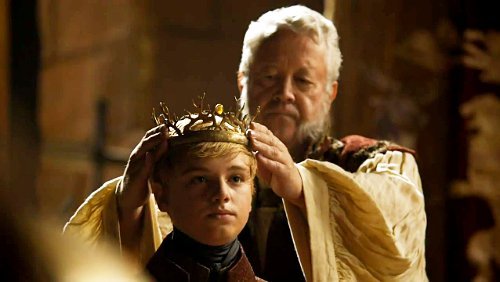 |
| I don’t really have a funny caption here, I just thought it was an ironic image to use this week. |
State of Play
The choir goes off. The board is laid out thusly:
Lions of King’s Landing: Jaime Lannister, Cersei Lannister,
Dragons of Meereen: Daenerys Targaryen
Direwolves of the Wall: Jon Snow, Bran Stark
The Mockingbird, Petyr Baelish
Roses of King’s Landing: Margaery Tyrell
The Direwolf, Sansa Stark
The Direwolf, Arya Stark
The Dogs, Sandor Clegane
The Shield, Brienne of Tarth
Spiders of King’s Landing: Varys
With the Bear of Meereen, Jorah Mormont
The Dreadfort and Dragonstone are abandoned
The episode is in eleven parts. The first runs five minutes and is set in King’s Landing. The opening image is of Tommen being crowned.
The second runs four minutes and is set in Meereen. The transition is by dialogue, with Jorah informing Daenerys of Joffrey’s death.
The third runs seven minutes and is set in the Eyrie. The transition is by hard cut, from Daenerys on her balcony to rocks.
The fourth runs three minutes and is set in King’s Landing. The transition is by dialogue, from Littlefinger and Lyssa getting married to Cersei and Tywin discussing weddings.
The fifth runs two minutes and is set in the Riverlands. The transition is by dialogue, with Arya reciting her list, including Cersei and Tywin.
The sixth runs three minutes and is set in the Eyrie. The transition is by family, from Arya to Sansa Stark.
The seventh runs two minutes and is set in the Crownlands. The transition is by dialogue, with Brienne and Podrick talking about Sansa.
The eighth runs three minutes and is set in the Riverlands. The transition is by hard cut, from Brienne and Podrick riding to the Hound waking up.
The ninth runs three minutes and is set in King’s Landing. The transition is by image, from a wide shot of a river to a pond.
The tenth runs three minutes and is set in the Crownlands. The transition is by hard cut, from Oberyn to a burning rabbit.
The eleventh runs eighteen minutes and is set at Craster’s Keep north of the Wall. The transition is by hard cut, from Podrick helping Brienne with her armor to an establishing shot. The final image is of Craster’s Keep landing on a snake and burning.
Analysis
Structurally, it’s largely a mirror of the previous week, only with a more disjointed build-up (prior to the jump to Craster’s it’s on track to be a Season Two-sized part count) and a more ostentatious set piece for the Craster’s sequence. The result is firmly the soft and kind of spongy middle of Season Four, and the sort of episode that trying to find anything to say about highlights why A Brief Treatise on the Rules of Thrones is not quite the most functional project I’ve ever designed. (I reckon this’ll be the last run of it – I don’t see much point in writing second essays about S5 and S6 episodes.)…
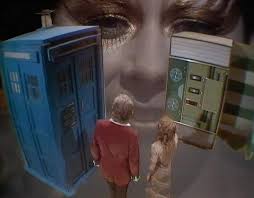 No essay today — instead we bring you a fabulous podcast! Shana, Daniel, and I discuss the very weird Doctor Who story called The Time Monster, as a part of Shana and Daniel’s ongoing Oi! Spaceman podcast series. It’s a hoot.
No essay today — instead we bring you a fabulous podcast! Shana, Daniel, and I discuss the very weird Doctor Who story called The Time Monster, as a part of Shana and Daniel’s ongoing Oi! Spaceman podcast series. It’s a hoot.
Well, not like a hooting owl, which can screech terribly when flapping its wings in the glaring sunlight as it struggles to free itself from its crystalline prison. Hey, actually, now that I think about it, feathers aren’t entirely dissimilar to flower petals. Maybe I make this into some kind of a “jewel in the lotus” motif. Nah, that would be ostentatious. Certainly not appropriate for a gem like The Time Monster.
Anyways, you can get the podcast here. Enjoy.…